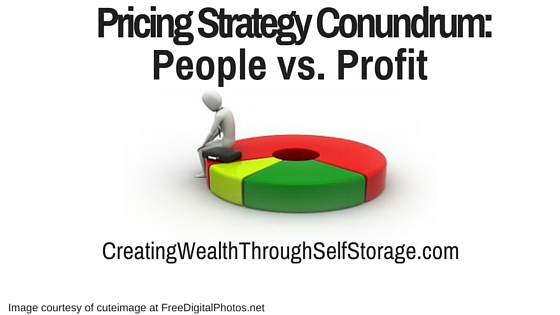There is a real revolution going on in the self storage industry these days.
In an industry where the biggest innovation to date (climate controlled units) happened in the 1970’s, this is arguably the biggest development ever in the business landscape for self storage.
And yet again, it’s the REITS who are ushering it in.
For me it’s very ironic. The title of my book, Creating Wealth Through Self Storage derived its name from the strategy I developed, and explain throughout, which involves raising prices annually over operating expenses. I promote raising pricing as essential to growing wealth through self storage, yet I’m resistant to the biggest innovation in our industry which involves a new way of altering unit pricing.
The self storage strategy I describe in my book involves tracking facility expenses closely, then raising the prices of the units every year to cover not just the increase in expenses but to also maintain profitability. As we project the financial viability of a facility prior to a purchase, our ProForma has our operating expenses adjusting upward 2.5% yearly, (what we perceive as the average inflation rate), and our rental pricing increasing upwards of 3% yearly.
This half a percent spread compounds over time and creates real wealth.
(Our average over the past eight years has been 2.1%, not the .5% in our ProFroma.)
Now there’s a new game in town. And I find myself in the same position as many of the owners I buy facilities from – an aversion to raising prices because they “don’t want to lose anyone.”
This new model is based on adjusting the pricing daily or weekly to reflect the market’s availability of various units. Much like airline ticket pricing or hotel pricing.
The new operational software out today has the capability to calculate these numbers for any facility.
For example, if the 10 x 10’s in our submarket are at a 95% rental rate, the street rate adjusts up 5% to 10%. If our 10 x 20’s have a 35% vacancy rate they may adjust downward from what they were last week when we were at 85% occupancy.
I haven’t seen any algorithms showing the difference between this pricing model and ours, but I bet it generates more income. You know how I know? The REITS use it. I guarantee they’ve run the numbers or this model wouldn’t exist.
So why am I so resistant? There’s a couple of reasons:
- I hate change like everyone else. Especially after I wrote a book about a wealth creating strategy and less than a year later a new strategy comes out. It makes me look less intelligent than I like to think I am.
- More importantly, I have heard so many customer complaints. From our current customers.
Yes, from our new customers who left other facilities after the third price increase in 2 or 3 months. I don’t have exact statistics (we haven’t starting to track this), but my guess is at least 3 to 5 new rentals per month come from disgruntled customers that leave our competitors over price increases.
Now I know in some ways it doesn’t matter. If they lose 5 customers a month and replace only 75% of them with higher paying customers, they’re ahead financially.
However, in my mind, I can’t help but think of those 5 customers. Now this is coming from someone who has had to coach more than one manager to raise prices because if someone leaves, no big deal. We’ll replace them with a higher paying customer.
Currently, our managers let our customers know we have one to two price increases per year “…depending on how much our expenses go up.”
But not weekly, not monthly.
At least not yet.
I’ve learned to never say never.
But in a period in our industry where everyone claim is “good customer service” and “we care about the customer,” as if that is a huge differentiator between competing facilities (which it is not) we can feel superior because we don’t just say it, we actually embrace it as part of our company culture.
We can have the experience of putting the customer first over our profits.
But as I write this, I’m also thinking about my responsibility to the investors who have entrusted me with their money. And then I’m right back where I started.
Why am I so resistant? How do you feel about this financial strategy – as a consumer and a business owner?




Hi Mark, I agree with you! I always think of the customer first. I do look at our competition rental rates to stay in the current sub market price range. However, I only raise rates on new customers if our rental rates fall far below the nearest competition. I know Public Storage has their rental rates down to a science since I know a GM that works for them. We keep our property clean and take our customers comments seriously.
Thanks for the feedback. Good to know I am not alone. Are you in a big market?